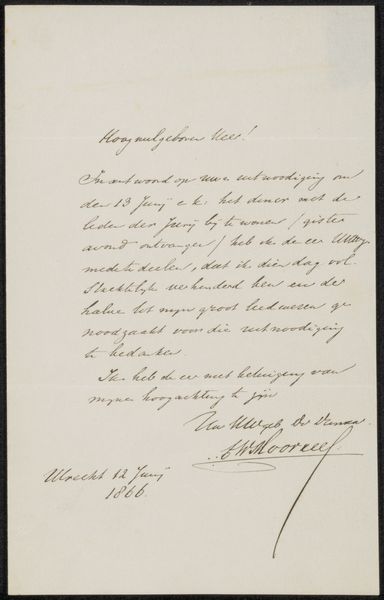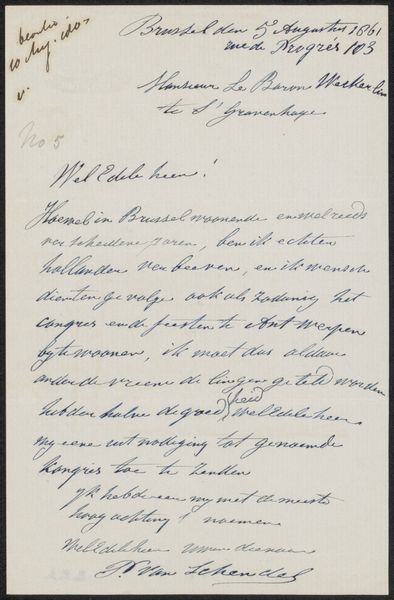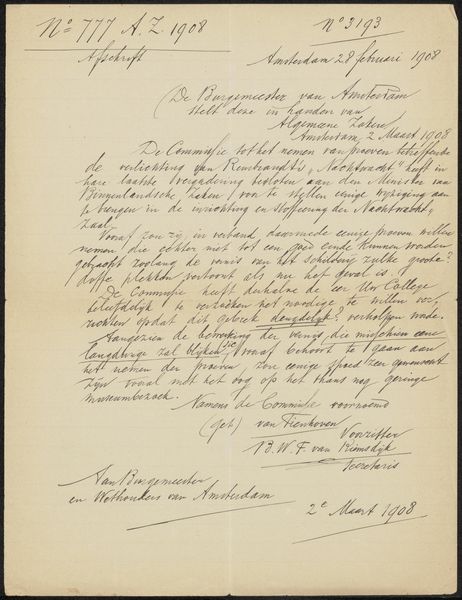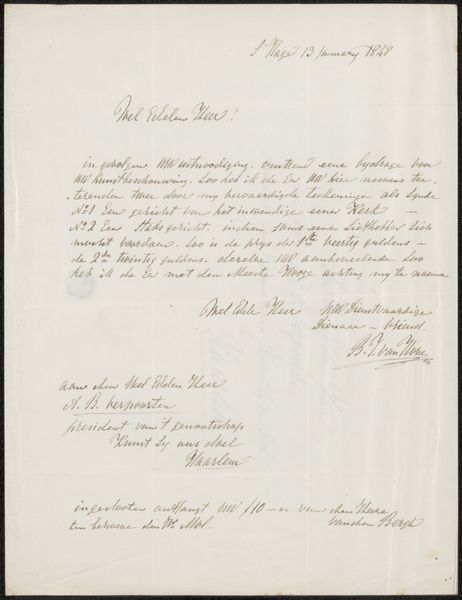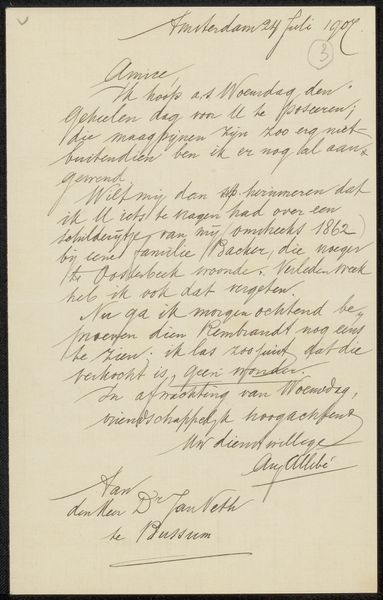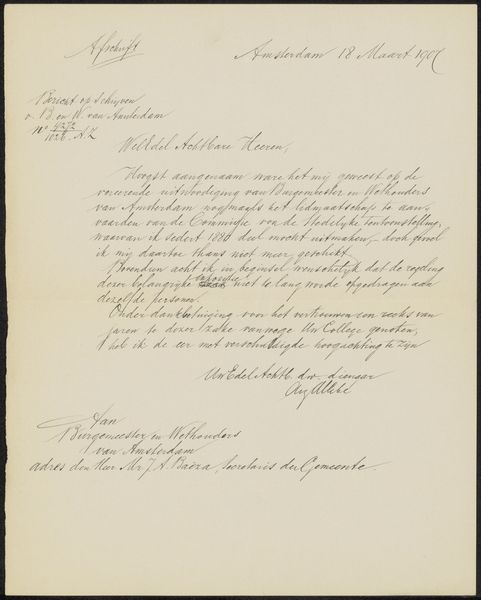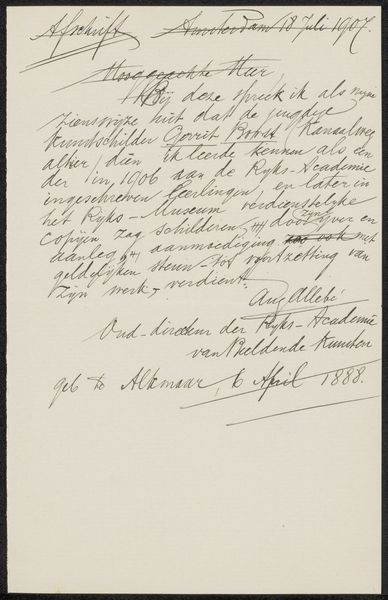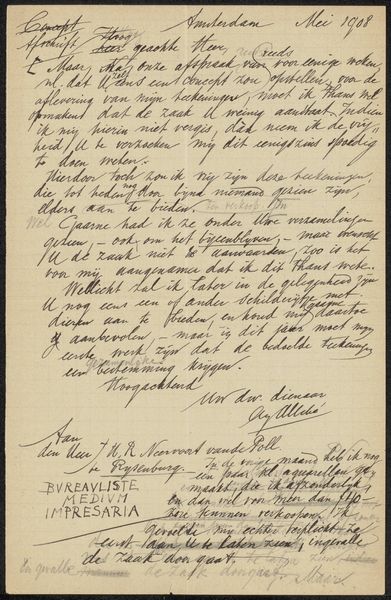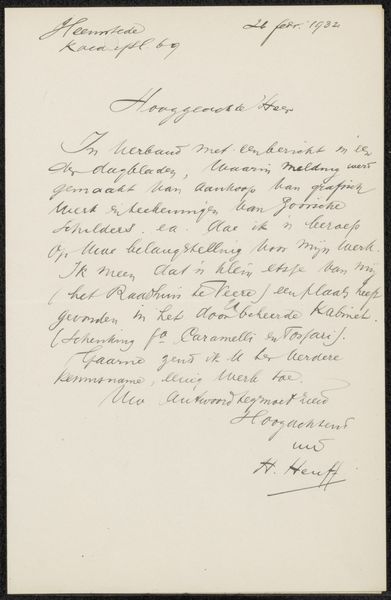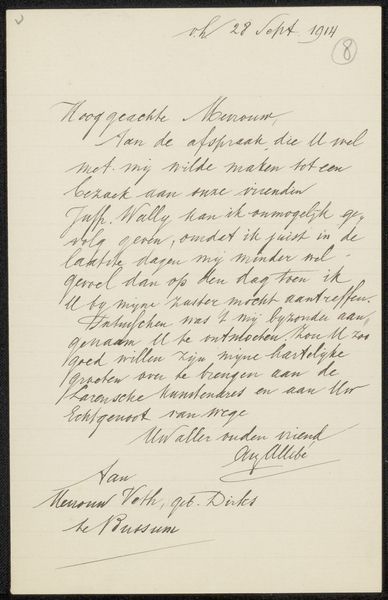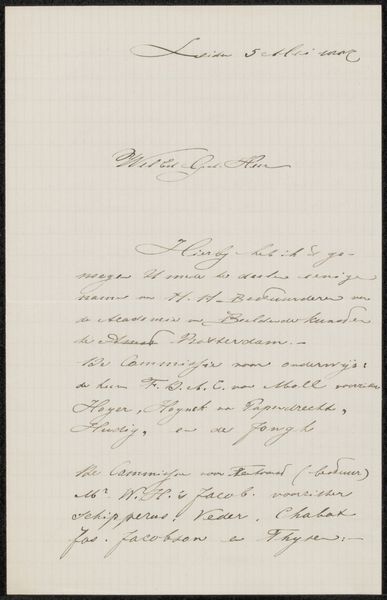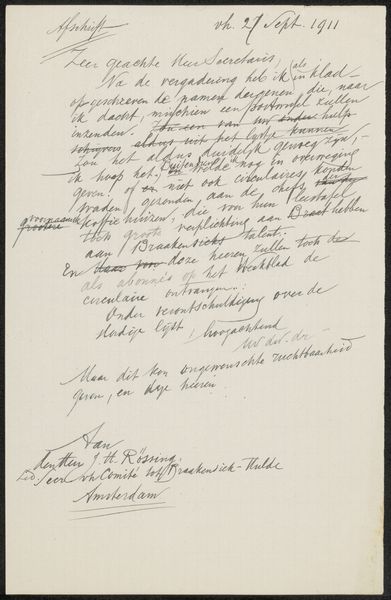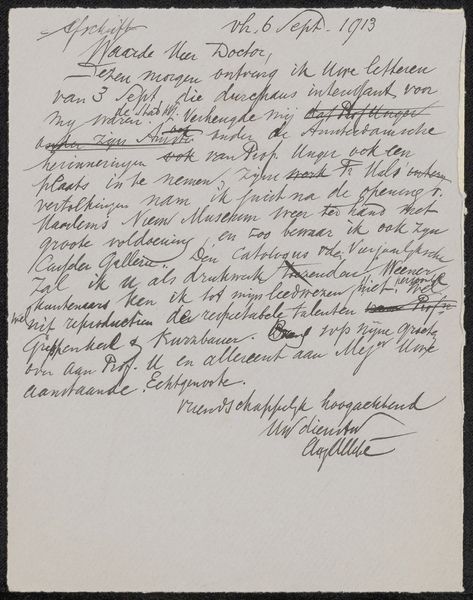
drawing, paper, ink
#
drawing
#
hand-lettering
#
old engraving style
#
hand drawn type
#
hand lettering
#
paper
#
personal sketchbook
#
ink
#
hand-drawn typeface
#
ink drawing experimentation
#
pen-ink sketch
#
pen work
#
sketchbook drawing
#
calligraphy
Copyright: Rijks Museum: Open Domain
Curator: Here we have "Brief aan Wilhelmina (koningin der Nederlanden)", or "Letter to Wilhelmina (Queen of the Netherlands)", created in 1915 by August Allebé. It's rendered with ink on paper and currently resides here at the Rijksmuseum. Editor: The immediate impression is one of formality, yet the handwriting feels surprisingly intimate, even vulnerable. There's a real human presence that contradicts the rigid structure of official communication. Curator: Indeed. As a member of the oversight committee for the Rijksmuseum, Allebé was likely writing in his official capacity. Context is everything; Wilhelmina reigned during a period of significant social and political change in the Netherlands, navigating the country through World War I while maintaining neutrality. Editor: And here, Allebé is formally asking the Queen to excuse him from his duties, citing his advanced age. There's a power dynamic at play, and even in asking to step down, he has to perform deference through calligraphy and submissive phrasing. I’m interested in that tension— the request cloaked in obligation and ornate script. It speaks volumes about the roles expected of individuals even as they age and seek to relinquish responsibility. Curator: The calligraphic style certainly elevates it beyond a mere administrative document. Notice the flourishing, the careful curves. It highlights the performative aspect of communicating with royalty at the time. Each word and pen stroke needed to display proper respect and societal standing. Editor: Exactly. The beauty of the script, almost like an etching or engraving, masks a very pragmatic act. The visual language elevates duty to the monarchy even as Allebé is seeking freedom from said duty. How much of this act of formality and respect came from a sense of true dedication, or the rules and limitations society imposed on private action. Curator: Looking at it, knowing it’s from 1915, amidst all the global turmoil and upheaval...it's interesting to see the meticulous detail afforded to such a personal matter presented on official terms. A seemingly minor glimpse into the personal life interwoven with larger historical currents. Editor: It makes me consider how such rituals of communication preserve power structures. This letter encapsulates a moment of transition and asks us to question whether individuals like Allebé were free to exercise their rights unencumbered by their civic position. Curator: I agree; the artwork challenges our perception of that era beyond the headlines and battlefields. It brings the broader story down to one humble communication that says a lot about individual agency versus enforced norms of that time. Editor: Right. Seeing those norms made visual leaves us pondering whose voices truly shape history, and at what cost to their autonomy?
Comments
No comments
Be the first to comment and join the conversation on the ultimate creative platform.
